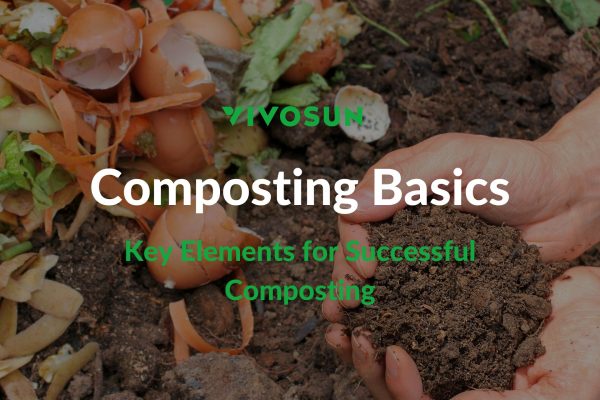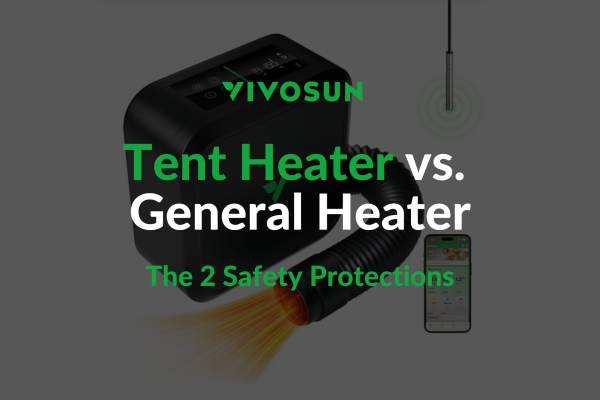Table of Contents
What is VPD (Vapor Pressure Deficit)?
The Earth’s atmosphere has a finite capacity when it comes to holding water vapor. This maximum amount of water vapor that air can potentially contain at a given temperature is referred to as the “saturated vapor pressure” or SVP. Conversely, the actual quantity of water vapor currently present in the air is known as the “Actual Vapor Pressure” or AVP.
Vapor Pressure Deficit (VPD) represents the pressure difference between this saturated vapor pressure and the actual vapor pressure at the prevailing temperature. In other words, VPD = SVP – AVP. This measurement essentially quantifies how “thirsty” the air is – how much more water vapor it has the capacity to absorb.
This pressure differential is a crucial driver of the transpiration process in plants. As VPD increases, it creates a greater pull on the moisture within the plant’s leaves and growing medium, causing the stomata (pores) to open wider to facilitate that water loss.
Monitoring and controlling VPD is paramount for cannabis cultivators, as it allows them to optimize the temperature and humidity levels in their growing space for peak plant health and productivity. By maintaining the ideal VPD range, growers can maximize transpiration, nutrient uptake, CO2 absorption, and overall growing conditions – avoiding issues like disease, environmental stress, and stunted growth.
In essence, developing a mastery of VPD equates to mastering your grow room environment. With this knowledge, you can become a significantly more skilled and successful cannabis cultivator, able to precisely measure and manipulate the climate to achieve the best possible results.
Foundations of vapor pressure deficit
1. Water Holding Capacity:
Higher temperatures increase air’s moisture-holding ability. Elevated temperatures create more space for moisture. Demonstrates the correlation between temperature and humidity, impacting VPD.
2. Diffusion:
Dictates molecular movement from high to low concentration areas. Rate of diffusion influenced by concentration gradient. Biological processes like plant pore closure can disrupt diffusion.
3. Implications for Plant Physiology and Ecosystem Dynamics:
Crucial for understanding VPD’s effects on plant physiology. VPD influences transpiration rates, nutrient uptake, and plant growth. Affects vegetation moisture content, atmospheric conditions, and fire risk.
4. Integration into Cultivation Practices:
Incorporating principles optimizes growing conditions. Monitoring and adjusting VPD levels mitigate risks. Utilizing VPD data aids in optimizing environmental management for healthier plant growth.
By understanding these fundamental principles and their implications for VPD, growers can optimize indoor gardening environments effectively.
How is VPD calculated?
To accurately calculate the current Vapor Pressure Deficit (VPD) of the air in your growing environment, you’ll need two key pieces of data – the temperature and the relative humidity (RH). These environmental conditions can be precisely measured using specialized instruments called thermohygrometers.
With the temperature and RH values in hand, you can then plug them into a complex mathematical equation derived from the Arrhenius equation to arrive at the VPD.
The formula to calculate Vapor Pressure Deficit (VPD)
VPD = Saturated Vapor Pressure (SVP) – Actual Vapor Pressure (AVP)
Saturated Vapor Pressure (SVP):
- This is the maximum amount of water vapor the air can hold at a given temperature.
- SVP increases exponentially as temperature rises.
- It can be calculated using the Clausius-Clapeyron equation or reference tables.
Actual Vapor Pressure (AVP):
- This is the actual amount of water vapor currently present in the air.
- AVP depends on the relative humidity (RH) and temperature.
- It can be calculated as: AVP = (RH/100) x SVP
The full VPD calculation:
VPD = SVP – [(RH/100) x SVP]
Or simplified:
VPD = SVP x (1 – RH/100)
For those not inclined to crunch the numbers themselves, an easier approach is to utilize a pre-calculated VPD chart or calculator. These user-friendly tools allow you to simply cross-reference your temperature and humidity readings to quickly determine the corresponding VPD value.
The relationship between VPD and temperature and humidity. (Using thermohygrometers to know temperature and humidity in the first place).

Using a VPD chart is particularly helpful, as it also indicates the optimal VPD ranges for each key growth stage of the cannabis plant. By maintaining the target VPD, you can ensure the plants are experiencing the ideal environmental conditions to facilitate efficient water and nutrient uptake, maximize transpiration rates, and minimize stress – all critical factors for achieving robust growth and high yields.
Whether calculating VPD manually or leveraging a chart, having this environmental data allows you to make informed adjustments to temperature, humidity and airflow to keep your grow room climate perfectly dialed in.
The Ideal VPD for the Different Growth Stages
1. Ideal VPD for seedlings and clones:
During the cloning and seedling period, the plants are relatively small, the plants cannot withstand a lot of pressure, and the plants do not have a well-developed root system. The ideal VPD for seedlings and clones is 0.4-0.8 kPa.
2. Ideal VPD for the Vegetative stage:
In the vegetative stage, plants grow larger and stronger. Appropriately increase VPD to strengthen the transpiration of plants, so that plants can quickly absorb water and nutrients. The ideal VPD for the vegetative stage is near the middle of the general range, around 1.0 kPa.
3. Ideal VPD for the Flowering stage:
During flowering, the plants are more robust, but the flowers are sensitive to various problems and need to avoid excessive humidity, which can cause diseases. The ideal VPD for flowering is 1.2kPa – 1.5kPa.
Effects of VPD on Plants

- The effect on the stomata of plant leaves: Excessively high VPD will cause the stomata to shrink to prevent excessive water loss. Due to the reduced stomata, the amount of carbon dioxide that plants can absorb through the stomata will also decrease, directly affecting photosynthesis.
- Effect on plant transpiration: As the VPD increases, the plant transpires (evaporates from the leaves) faster due to the greater vapor pressure difference between the leaves and the air. As transpiration increases, the ability of plant roots to absorb nutrients and water from the soil is also enhanced.
- Plant stress: With the continuous increase of VPD, the vapor pressure difference between the leaf and the air is too large, the plant transpiration is too fast, and the root system has no time to absorb water and nutrients, thus causing excessive pressure on the entire plant and affecting the plant’s health. Growth and development were negatively affected.
VPD reveals the relationship between temperature and humidity in the planting environment. When we plant plants under a suitable VPD, the stress on the plants will be less, the growth will be more vigorous, and the yield will be higher.
The key points about VPD
Vapor pressure deficit (VPD) is influenced by both the temperature and relative humidity (RH) levels in the growing environment.
1. Temperature
Raise temperature: increase VPD
Reduce temperature: reduce VP
2. Humidity
Increase Humidity: Lower VPD
Reduce Humidity: Increase VPD
Maintaining the ideal VPD range is absolutely crucial for optimizing plant health and growth. If the VPD climbs too high, it can cause the plants to transpire, or lose water, at an accelerated and unsustainable rate. This rapid water loss induces significant stress on the plants and leads to stunted growth and development.
The target VPD range considered optimal for thriving cannabis cultivation typically falls between 0.8 to 1.2 kilopascals (kPa). Keeping VPD within this sweet spot helps facilitate the plant’s efficient uptake of both water and essential nutrients.
Seasoned cannabis growers closely monitor and meticulously adjust various environmental factors like temperature, humidity and airflow in order to maintain the VPD at the ideal level. This is especially critical during the plant’s different growth stages, as the optimal VPD range may shift slightly as the plants mature.
If you have any questions, please don’t hesitate to reach out to us!
And be sure to check out our other blog posts for useful tips on becoming a great grower!






